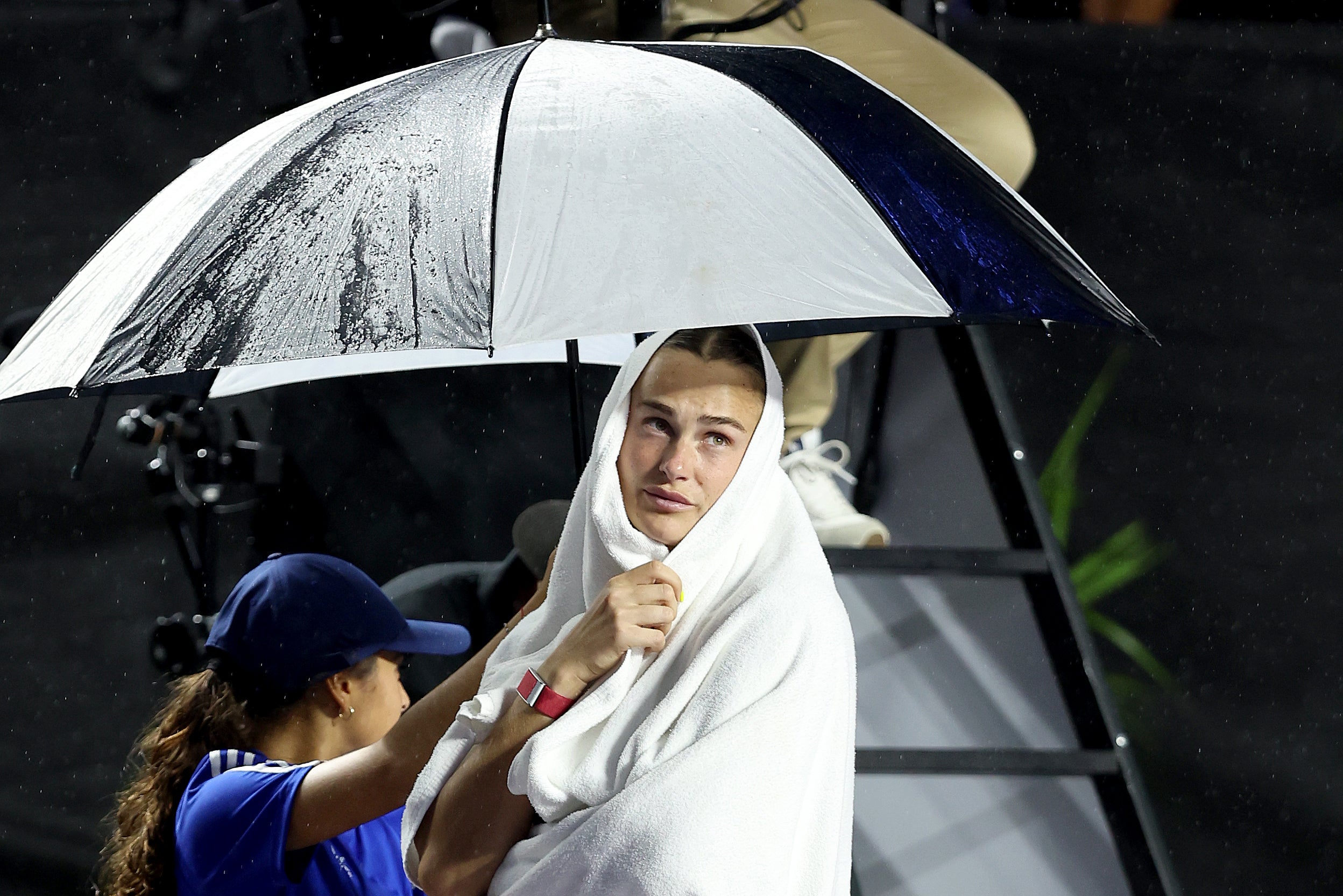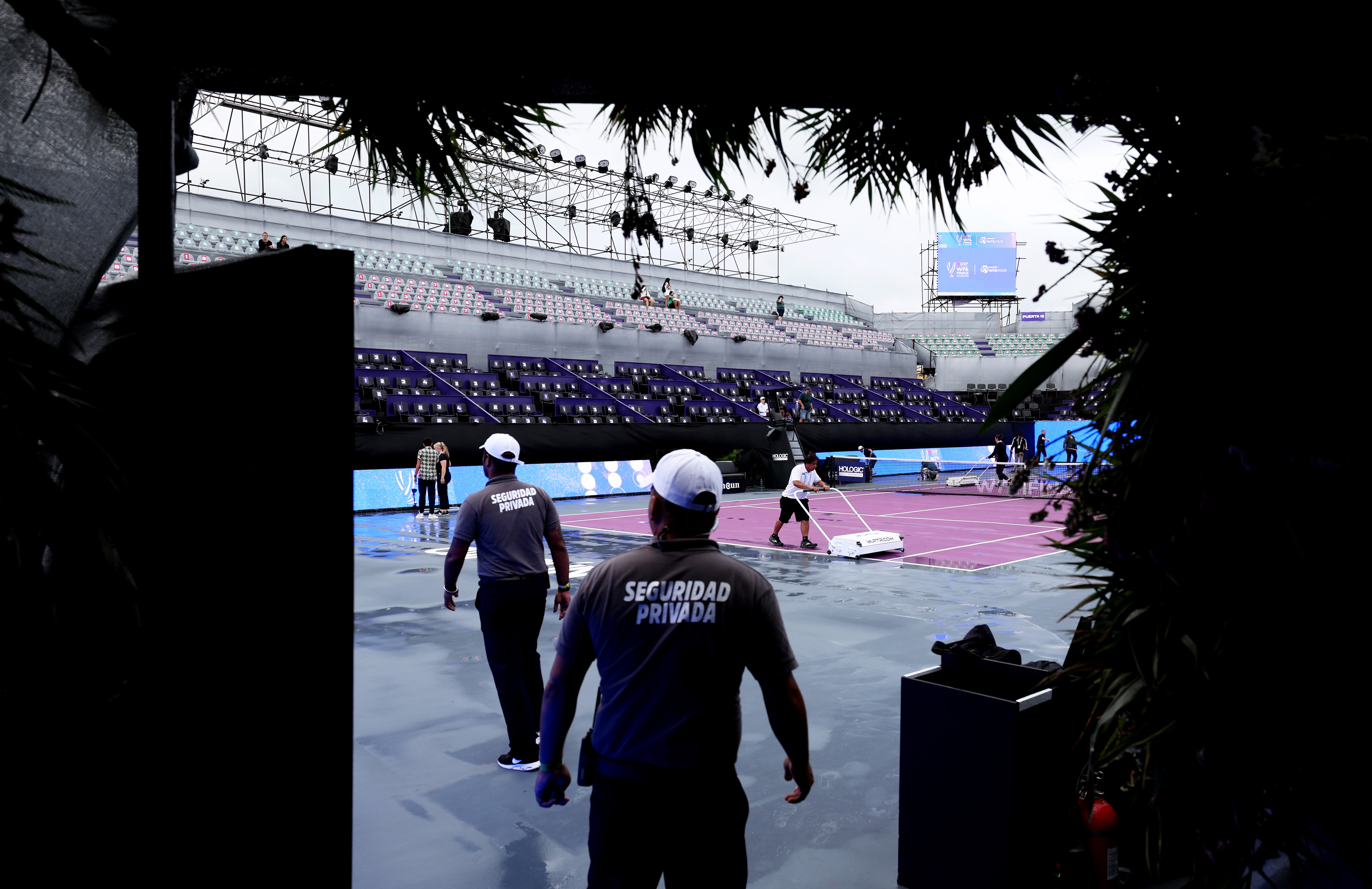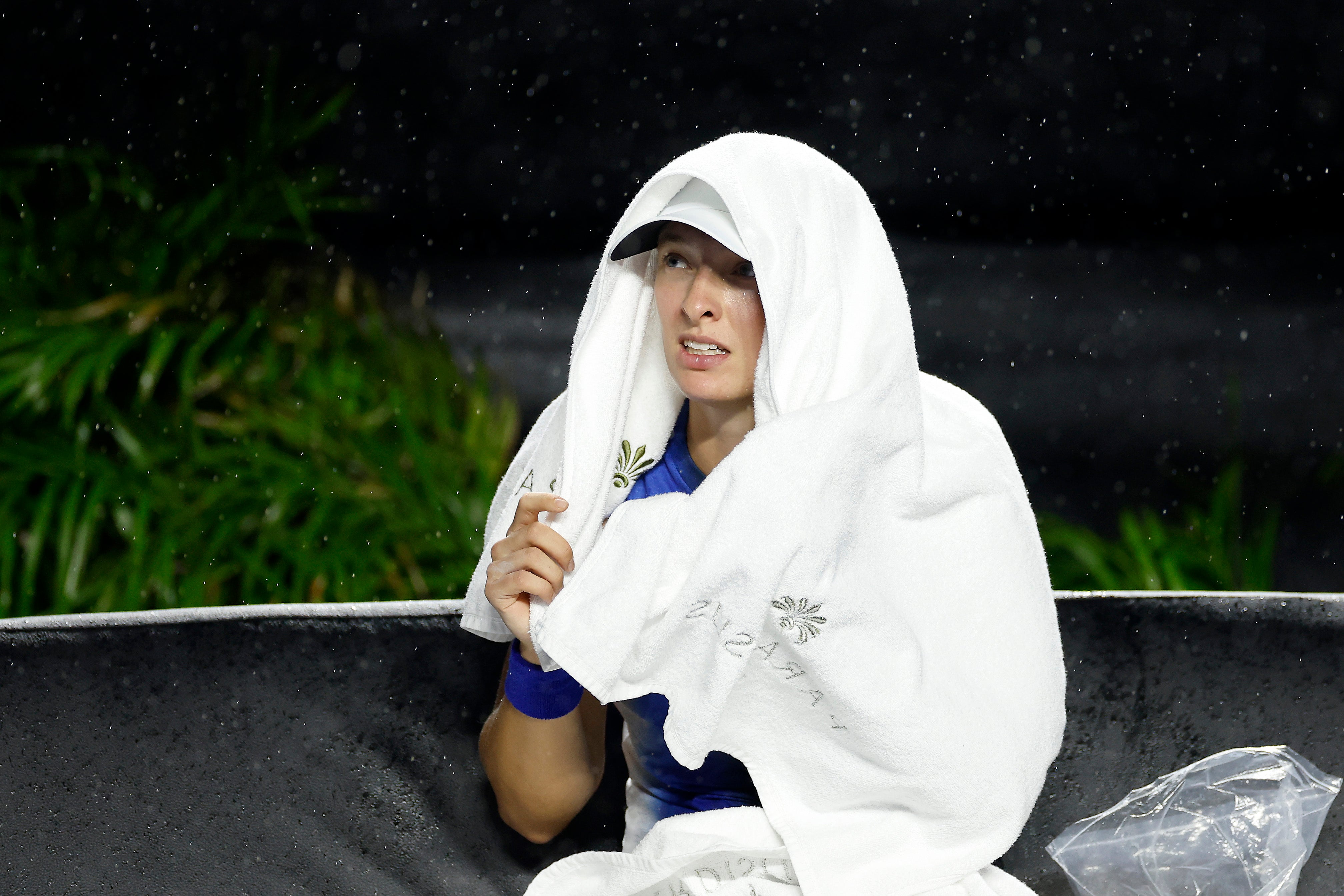How the WTA Finals became the Fyre Festival of tennis tournaments
The chaos of the season-ending tournament in Cancun became an instant meme - but it raised serious questions about the future of the WTA

Your support helps us to tell the story
From reproductive rights to climate change to Big Tech, The Independent is on the ground when the story is developing. Whether it's investigating the financials of Elon Musk's pro-Trump PAC or producing our latest documentary, 'The A Word', which shines a light on the American women fighting for reproductive rights, we know how important it is to parse out the facts from the messaging.
At such a critical moment in US history, we need reporters on the ground. Your donation allows us to keep sending journalists to speak to both sides of the story.
The Independent is trusted by Americans across the entire political spectrum. And unlike many other quality news outlets, we choose not to lock Americans out of our reporting and analysis with paywalls. We believe quality journalism should be available to everyone, paid for by those who can afford it.
Your support makes all the difference.A beach resort in Cancun. The eight best women’s tennis players in the world. $9m and the world No 1 spot on the line. What could possibly go wrong? If you have followed anything of the WTA Finals this week, you will know the answer is pretty much everything.
The prestigious event was won by Iga Swiatek on Monday night, crushing Jessica Pegula to capture the final tournament of the season and take the year-end world No 1 ranking. But in the years to come, the 2023 WTA Finals will be remembered as the tournament that launched a thousand memes, descending into high farce as tropical storms lashed in to the temporary arena by the Gulf of Mexico. Like the ill-fated Fyre Festival, the WTA Finals was a tournament that promised style and luxury, but descended into darkness and seemed to hit a new problem at every turn.
In the end, the decision to host an outdoor event during hurricane season, and a stone’s throw away from the coast, proved to be a completely comical one. That’s if the clear problems of disorganisation weren’t so serious. Aryna Sabalenka appeared to sum it up: “I’m dying laughing or maybe crying,” she posted. As the rain hit, Sabalenka, with a towel over her head, was left looking up pleadingly like Mother Teresa at the dark skies. Then there was Coco Gauff, gripping onto an umbrella as if her life depended on it, before giving up with a resigned sigh as it eventually buckled and snapped out of shape.
Players were fed up, matches suspended, and the final pushed back to Monday. Play was ruined at times by the swirling winds and challenging conditions. Water flooded the temporary venue and shivering ballgirls worked tirelessly to clear the courts. Yet, before the weather descended, players were already unhappy. Sabalenka said she felt “disrespected” after arriving in Cancun to find a court built on top of a golf course, which produced an uneven bounce. Given the conditions and how the Finals arrived in Cancun in the first place, it led to the WTA’s chief executive Steve Simon coming under increasing pressure. Martina Navratilova, the 18-time grand-slam champion, said it will be hard for Simon to survive the disaster of the past week.

“So so sad for all of us,” Marketa Vondrousova posted on Instagram and, as the Wimbledon champion left Cancun following the group stages having played three, lost three, it seemed heading home finally brought some relief. “We work hard all year to get to the Finals and in the end it’s just a disappointment,” Vondrousova said. “[The] stadium is not at all ready for the matches and to me it feels like the people from [the] WTA are absolutely not interested in how we who are supposed to play on that court feel. We do not feel that anyone listens to us and is interested in our opinions.”
Such strong words demanded a response from the WTA. Tour staff say they listen to players and incorporate feedback from them into their decision-making process. Simon held a meeting with the players in Cancun where he accepted responsibility for the conditions and conceded it was “not a perfect event”. The decision to host the WTA Finals outdoors in Cancun, he said, was "based on a number of complicated factors” but it is he who is now under mounting scrutiny.

For a start, naming Cancun as the host venue of the WTA Finals only two months before the start of the tournament on 29 October left Simon and the WTA open to accusations that they had made life more difficult for themselves. That the WTA was left still scrambling for a venue by the start of September goes back to a 10-year contract to stage the Finals in Shenzhen, China, which only produced one tournament in 2019. Then Covid hit, the contract was cancelled amid the WTA’s suspension of events in China following concern over the wellbeing of Peng Shuai, and the Finals have been moved around alternative venues ever since.
After stops in Guadalajara in 2021 and Fort Worth, Texas in 2022 – where pitiful attendances were also put down to the late announcement of host venue – Cancun was unveiled for 2023. The resort town saw off a rival bid from the Czech city of Ostrava, which offered a four-year contract, but also came with the risk that Sabalenka, the pre-tournament world No 1 and the Australian Open champion, would not be allowed into the country because she is Belarusian. It is understood there was a similar concern over Vera Zvonareva, who is Russian, and would go on to win the doubles title in Cancun alongside German partner Laura Siegemund.

As a result, The WTA Players’ Council backed the Cancun offer, amid rumours of a bid from Saudi Arabia. That the WTA and Cancun only signed a one-year deal suggests the possibility of Saudi Arabia hosting the WTA Finals and the Billie Jean King trophy from 2024 will resurface next year, an idea that will continue to be controversial for as long as the WTA’s values of equality come up against criticism of Saudi Arabia’s human rights record and laws that criminalise LGBTQ people.
But, in 2023, the show rolled on in Mexico, which had already held a popular WTA 1000 event in Guadalajara and, through that, had earned a reputation for its passionate crowds. Cancun, though, was different, and did not have purpose-built facilities for hosting a major tennis tournament. Staging the Finals there required the construction of a 4,000-seat, temporary arena on the grounds of a luxury resort. When the top eight players in the world started to arrive, they found a building site and a match court that was not ready to practise on. The court was only completed on the day before the start of the tournament, giving players little time to adjust to the conditions. When they eventually got to practice, they found the surface to be uncomfortable to play on.

“This is not the level of organisation we expect for the Finals,” Sabalenka said after her opening win over Maria Sakkari. “To be honest, I don’t feel safe moving on this court a lot of the time, the bounce is not consistent at all. It’s just not acceptable to me with so much on the line and so much at stake.”
For many players, the conditions they found at the Finals was the tip of an iceberg that summed up their previous grievances with the WTA. The tournament came at the end of a season that saw separate sexism storms at the Italian Open and the Madrid Open, and in October a group of leading players signed a letter to the WTA with concerns surrounding pay and the schedule of the calendar. “Changes can take time, but everything we do is a direct result of collaboration and open dialogue,” the WTA said in a statement. “As we’ve shared with players, the WTA is actively implementing specific improvements, and we are committed to reviewing proposals from players while maintaining a strong future for the Tour and women’s tennis.”
But women’s tennis is instead facing a time of crisis and looks short of strong leadership. The scheduling of the WTA Finals in Cancun left players with two days to make the start of the Billie Jean King Cup in Seville, now that the team event is being played across six days. Swiatek and Pegula had already pulled out of the tournament but would have been left with no choice after the singles final was postponed to Monday. Australian doubles player Ellen Perez was left with 14 hours to make it from Cancun to Seville for a 10am match on Tuesday. “Really not impressed with this scheduling disaster,” she said.

By the time the singles final was played on Monday night, the storm had passed. Swiatek coped with the challenging court well enough to thrash Pegula 6-1, 6-0 and win the WTA Finals for the first time, the four-time grand-slam champion reasserting her position at the top of the rankings following her impressive win over Sabalenka in the semi-finals. When Swiatek’s trophy was presented, Simon was booed by many of the fans who had kept their tickets for the rearranged showpiece.
“Maybe it’s time for new leadership,” Navratilova said, suggesting that it’s about time a woman was given the position of head of the WTA. “It’s going to be hard for Steve to stay in the job somehow because everything is pointing the other way right now.” And so, after the rain, the storms and the controversy, the sound of boos was a telling way for the Finals to conclude.
Join our commenting forum
Join thought-provoking conversations, follow other Independent readers and see their replies
Comments